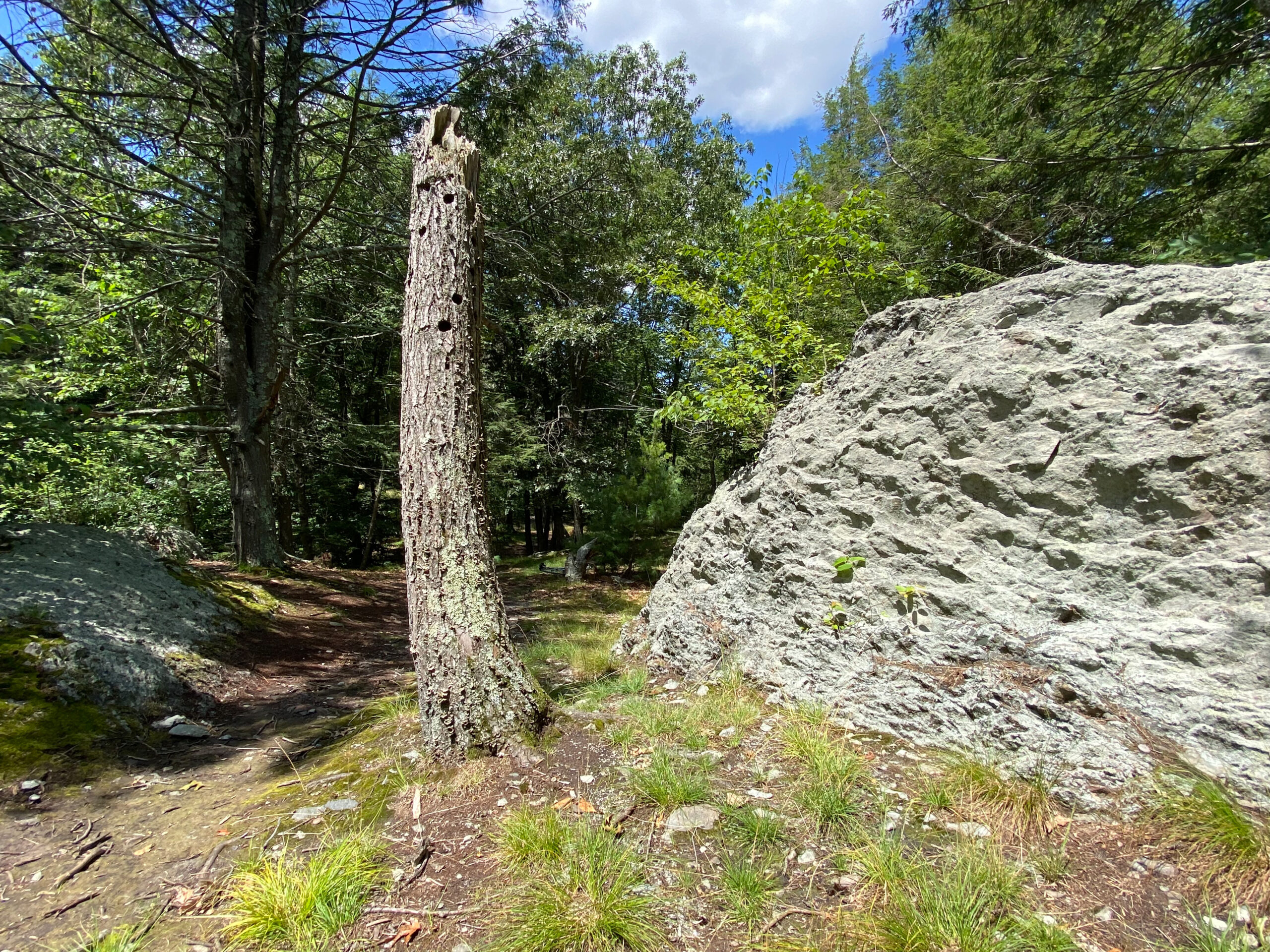‘Standing dead” is the name for a plant no longer living, now dead, but still part of Arnold Arboretum’s collection. As a part of healthy forest ecosystems, these standing dead are self-supporting remnants of once-living trees. For insects, snags provide a source of nutrients, feeding on their decaying matter, while birds find important habitats inside their bark and among their branches.
On a cold, clear day in March, I walked Hemlock Hill in search of standing dead specimens. The first one I noticed was 1911-98*A, a specimen of Canadian hemlock (Tsuga canadensis) tightly spaced with another living hemlock, their living and dead branches intertwining. The dead wood bore a healthy green hue, living things flourishing on its dead bark. So life visits the standing dead.
Farther up, past a rock outcropping, another hemlock snag (2341-98*A) had progressed further in its decay. Bracket fungus and purple polypore carpeted its bark, marching up its deceased bole. Fruiting bodies of the fungal mycelium, these dispersal organs are chitinous, not plant material, erupting from darkness to seek light. They form a profuse fungal ladder up the sides of the snag, lacy outlines in stark contrast to the rough bark. In their plenitude, the many successful fruiting bodies provide a snapshot of the hyphal mass beneath the bark. This mass of life extends upwards, as tall as this hemlock once stood—a successful biological strategy. They spread their spores over Hemlock hill, near the summit, where the wind catches them and distributes them over snags and fallen dead.
The final member of the standing dead I encountered was barely standing at all. A stump sticks out near the summit of Hemlock Hill. In full sunlight, 1952-98*A stands fully rotted from the base, colonized by mossy, mazy polypore. This fungus does not march up its sides, but layers the dead hemlock stump, demonstrating just how deeply this specimen has decayed.
The standing dead do not dazzle with their foliage, but they still contribute to the ecological circle of Hemlock Hill. Whether standing or fallen dead, these members of the collection at Arnold Arboretum are a home for new life, long after death.
Galen Bunting is a postdoctoral fellow in English at Northeastern University.
